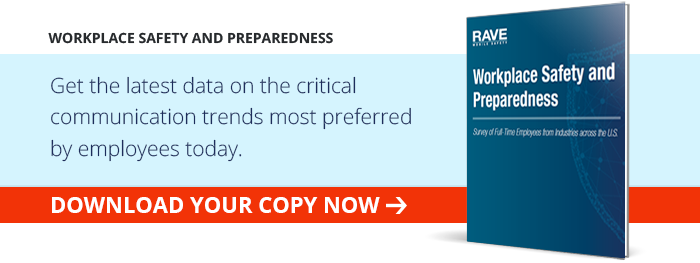Reducing Burden of Nurse to Patient Ratio in Hospitals
Professionals working in healthcare are statistically more susceptible to workplace violence than those working in other industries. Many hospitals and healthcare facilities are underfunded and face staffing shortages, putting more strain on employees and exposing them to more risk.
The healthcare field is critical for managing community wellness and safety. Every day, residents rely on local nurses, doctors, and specialists to address health concerns. The employees in the field likely pursued the career for the opportunity to help others, and their contributions shouldn’t be overlooked. Neither should their safety, as in recent years, new concerns about the rates of workplace violence in the healthcare field have come to light.
In 2016, the New England Journal of Medicine published a study that found that violence in the workplace is under-reported by healthcare professionals. This is alarming, as the review also included data from the Bureau of Labor statistics that revealed healthcare workers are four times as likely to require time off or away as a result of violence as they are other injuries on the job. Even though healthcare and social assistance workers make up only 12.2% of the workforce, nearly 75% of workplace assaults happen in the healthcare sector. Unfortunately, these statistics likely understate the problem, since many of these workers accept violence as part of the job.
James Phillips, who works in the Department of Emergency Medicine at Beth Israel Deaconess Medical Center, found these statistics alarming, but not necessarily surprising. “Health care workplace violence is an underreported, ubiquitous, and persistent problem that has been tolerated and largely ignored. One reason health care providers are reluctant to report these [incidents] is that we have compassion for our patients, and we don’t want to treat patients like they’re criminals or the enemy,” Phillips told Reuters Health. “So we probably make excuses when we shouldn’t.”
There’s overwhelming evidence that healthcare workers need more protection from violence, there’s little consensus on how to address the issue. Every hospital struggles with unique threats and risks, and there is no single solution. However, many of these issues are systemic, and the nurse to patient ratio in hospitals is contributing to the increase in workplace violence for healthcare professionals.
According to the Association of Colleges of Nursing, the United States is projected to experience a shortage of registered nurses as baby boomers age and the need for care grows. The issue is compounded by nursing schools across the country are struggling to expand capacity to train the number of professionals needed to meet this rising demand. The issue must be addressed with a comprehensive plan that includes changes in legislation, new organizational strategies, and by leveraging innovative technology to alleviate the strain on nurses and improve patient care.
The Case For Nurse to Patient Ratio Legislature
According to NurseWorld, the American Nursing Association advocates for the appropriate number and mix of nursing staff is crucial to delivering patient care. Since healthcare employers may not recognize the correlation between experienced RN staffing and patient outcomes, laws and regulations are necessary. There is currently a federal regulation in place that which requires hospitals to “have adequate numbers of licensed registered nurses, licensed vocational nurses, and other personnel to provide nursing to patients as needed.” Unfortunately, the vague language in the regulation allows hospitals and other healthcare facilities to find loopholes, and makes it up to individual states to institute staffing laws.
Many states have made strides to ensure there is optimal nurse staffing, but there is still work to be done. California is the only state with laws that stipulate a required minimum nurse to patient ratio per hospital unit. Massachusetts is the only other state with a similar law, requiring a 1:1 or 1:2 nurse to patient ratio in the ICU. Minnesota requires a core staffing plan with input from nurses, and five states – Illinois, New Jersey, New York, Rhode Island, and Vermont have mandatory reporting for patient to staff ratios.
According to the ANA, state staffing laws typically have three strategies for addressing under staffing. The first is requiring hospitals and other facilities are to have nurses to create a staffing committee to put together plans that reflect the needs of the patient population and match the skills of practitioners with patients. The second is to have legislature mandate a nurse to patient ratio in law. The third approach is to require hospitals and other facilities report staffing levels to the public and appropriate regulatory bodies.
It makes sense that California is leading the charge when it comes to establishing nursing laws. In March, State Representative Ro Khanna, a Democrat from California, and 12 other House Democrats introduced legislature intended to curb workplace violence. The Healthcare Workplace Violence Prevention Act, would direct the Occupational Health and Safety Administration to create a standard that would require health care facilities to develop and implement facility and unit-specific workplace violence prevention plans. These guidelines would include appropriate nurse-to-patient ratios, and would require workplaces to create comprehensive violence prevention plans with input from nurses, doctors, and custodial staff.
“Health care workers, doctors and nurses are continuously at risk of workplace violence incidents, strangling, punching, kicking and other physical attacks, that can cause severe injury or death,” Khanna wrote in a press release. “This is simply unacceptable. The Health Care Workplace Violence Prevention Act puts a comprehensive plan in place and is a national solution to this widespread problem modeled after the success seen in California.”
“Health care workers, doctors and nurses are continuously at risk of workplace violence incidents…that can cause severe injury or death”
If the Act is signed into the law, it could help address the under staffing that often leads to workplace violence against nurses. In the meantime, the America Nursing Association is continuing to advocate for legislature on the state and federal level to hold hospitals accountable for implementing tangible, unit-by-unit nurse staffing plans.
Leveraging Technology For Nurse Safety
When crafting a hospital or healthcare facility-wide safety plan, nurses and doctors should take into account how technology might help address gaps in staffing. A mass notification system can help keep all hospital employees and patients on the hospital campus informed, even during periods with low staffing. It can help manage long wait times as well – if there’s an emergency that is taking much of the hospital personnel to address, many patients will be more willing to wait if they are informed. Often it’s the lack of communication that makes people in the waiting rooms irritable, which has the potential to lead to confrontational or violent situations.
A mass notification system would also allow for greater communication among hospital employees. The appropriate nurse to patient ratios are important, but so is making sure nurses are given assignments appropriate for their area of expertise. By speeding up communication between nursing teams, the facility can ensure that every patient is receiving the best possible care without putting a major strain on staff. Even though hospitals have a designated code system for staff to keep each other informed, this would allow for nurses and doctors to establish a line of communication with other hospital staff or personnel.
During an emergency, it’s important for nurses, doctors, or other staff to have direct access to help. It’s clear that addressing the staffing crisis through legislature, facility planning meetings and technology is the most effective way to combat workplace violence as the result of nurse to patient ratios.





